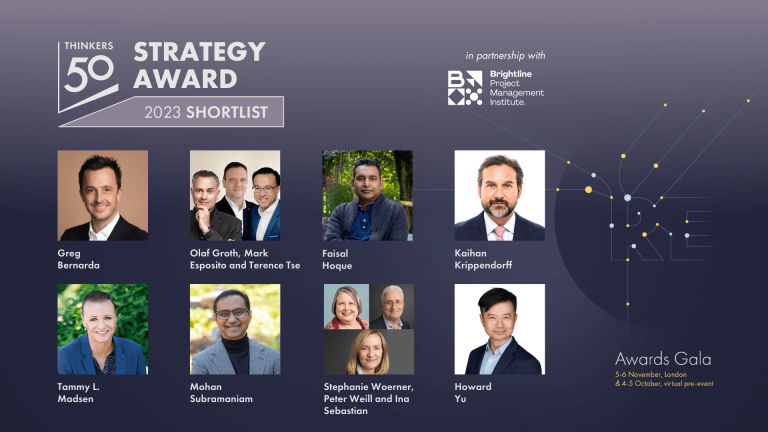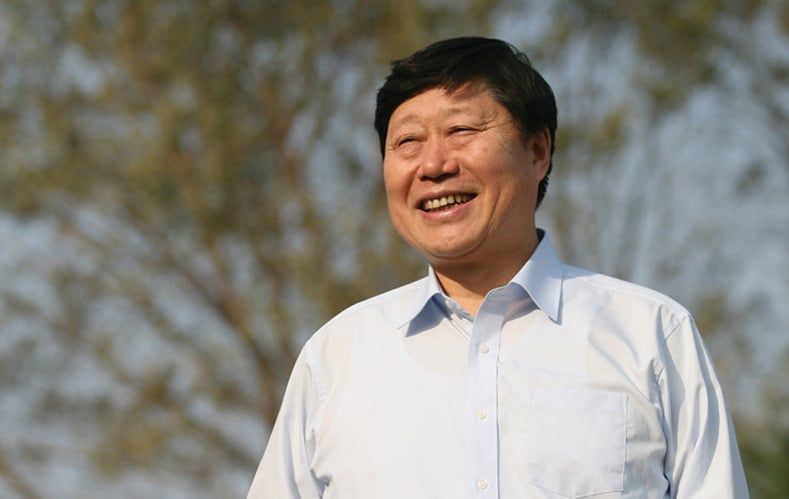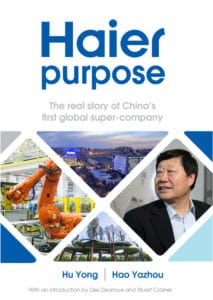

The late Intel chairman Andrew S. Grove felt that the Chinese have an almost innate creativity when it comes to wealth, but they seemed to lack enthusiasm and concern in the operation of organizations. From the beginning of his company’s growth, the Haier CEO Zhang Ruimin’s focus was not only on advanced technology, but on finding suitable methods for the management of Chinese enterprises.
Beginning from assembly line management, Zhang learned Taylorism, and created what is known as ‘OEC Management’. O stands for Overall, E for Everyone, Everything, Every day, and C for Control and Clear. To summarize, this management ideology means that: ‘Everyone does daily tasks on the day, clears their To Do List daily and improves standards daily.’
Zhang Ruimin uses the analogy of a ball on a slope in order to illustrate the need to maintain the market position of the enterprise. The company is under pressure from market competition and internal staff’s slackness; if there is no braking force, the ball (the enterprise) will roll down the slope. To maintain the position of Haier on the slope (the market), a braking force is necessary – that is, basic management.
At Haier this is known as ‘Haier’s Development Law’. Continuing with the analogy of the slope, OEC management has three levels of deeper meaning:
(1) Management is a necessary condition for business success. With no management, there is no braking force, and the ball will slide downwards, so you will not succeed.
(2) The focus on management should be to persevere. Management is difficult and painstaking. Management levels are prone to falling, meaning that even if the brakes are held in place, they will eventually loosen; therefore, they require constant reinforcement. Management is clumsy. There is no way to resolve management issues once and for all. Managers can only work to continually hold the position, repeatedly working on maintenance, only then does the ball stop rolling and stay in place on the slope.
(3) Management is dynamic and endless. As a business moves forward, the braking system should also move up along the slope. There is no fixed management style; it needs to be continually adjusted to corporate objectives, thus it should be dynamically optimized as external and internal conditions change. Management styles must not form rigid dogma. Haier’s slogan is ‘training for the fight, not to watch the fight’. Everything depends on results.
OEC management improves the quality of the people and their output and implementation. Zhang Ruimin often tells employees: ‘What is remarkable? Being able to do simple things every day is remarkable. What is not easy? To do extremely carefully the things everyone recognizes as very easy is not easy.’
Haier’s OEC, like Taylorism, dissected worker actions. The quantification of the task was the basis for assigned targets, quality assessment and incentives. Frederick Winslow Taylor said that he wanted to establish a management system, so that supervisors only needed to respond to exceptions, and did not need to supervise workers, thereby avoiding exhaustion and burnout. Haier adopted a similar method, with one month of on-the-job training to turn newly arrived rural migrant workers into qualified workers.
At prominent places by the entrance and working areas in the Haier workshop, a red bordered, white 60cm square was painted on the floor, with a pair of green footprints in the centre. This is called the ‘Big 6S Footprint’. Standing on the large footprints and looking forward, you will face a sign. The sign says ‘tidying up, organizing, sweeping, cleaning, quality, safety’, all of which began with S in the original Japanese from which the Chinese terms were derived. So this area was referred to as the 6S self-test station. At the daily meetings before work, the heads of the workshops would stand there and report on the day’s 6S activities. Weak employees would stand on the footprints and reflect on their work.
From December 1998, as the quality of Haier staff improved, the Refrigerator Division promoted the practice of ‘the Big 6S Footprint’ up to the level of exchanging best practices, and the other divisions followed. The star staff of onsite management, quality management, technology improvement and the like were invited onto the Big 6S Footprint to tell their successful know-how. The idea of 6S enhanced the enthusiasm of the staff, while the meaning of 6S was then transformed from it’s original use in reflecting problems to being used to show the optimal method.
6S was a unique way for Haier to strengthen onsite production, intended to allow better utilization of the existing equipment by developing a high level of equipment maintenance and thus eliminating uneconomic operations (in handling, testing, adjusting, etc). However, the pursuit of excellence in production was not limited to the consideration of efficiency; the greater purpose was to shape the company’s own work ethics. Creating a constructive work ethic in the enterprise took years of trial and nurturing.
The OEC model established the Haier management style: strict requirements, detailed division of labour, tangible responsibility, constant perseverance. It not only played a huge role in the development of the enterprise, but also laid the basis for the Haier’s future process reengineering.
Zhang Ruimin explains:
The greatest difficulty for Chinese companies is implementing standards and acting on regulatory requirements. Companies might meet them one day, but may be not the next. In more sophisticated international enterprises, this problem does not seem to exist. Those enterprises are given a certain set of requirements. Once they are achieved, they would seldom be changed. But Chinese enterprises are very practical. For example, if I asked a worker to clean the table today, they would do it today; the table would still get dirty the next day, but they would not clean it again. Therefore, managers must constantly lay down requirements and make repeated efforts to have the requirements fulfilled.
For a brand, each link in the chain is very important, for all staff, for the entire system. If everyone’s work is poor, the brand will be unworthy of the title. We are competing with the international brands. Small gaps make large differences. In terms of products, they may not have differed so much from theirs, only a little rougher here, not smooth enough there, the difference was not much. But we can see from this small difference that there exists a huge gap in management and the quality of staff.
In his book The Effective Executive Peter Drucker said that if the same crisis recurs it is often caused by negligence and laziness on behalf of the managers. This played a huge role in changing my personal management style. At that time, the standard of good management was to see how busy the manager was; if a manager worked ten hours a day, leaving work late, he felt like a good manager. However, Drucker said: Excellent managers do not use this as a standard, effective management is employed as the standard, so you do not deal with duplicated and repeated mistakes every day.
 In response to this, Haier classified three levels of enterprise management style. Haier’s management appraisals were also done according to these three levels. The lowest level of management was a ‘steward’; the higher level of management was the ‘people manager’, and the highest level of management was a ‘regime manager’. The stewards followed the well-known Chinese expression ‘walls should be made to counter an army, but dams should be made for rivers’, meaning that different situations call for different actions and appropriate measures should be adopted to solve those very problems. In other words, they respond to different situations in different ways. Unfortunately, the result was that with more management efforts came more complexity and eventually more disorders. ‘People managers’ are one level higher. They find who is responsible for certain matters, so they are much better than stewards. The most important is the ‘regime manager’. Changing the regime enables the whole enterprise to undergo an orderly development process. As Jim Collins said in Built to Last, good company managers are clock builders rather than timekeepers. However, the leadership of many companies like to focus on timekeeping. Whatever timeframe they specify is how long the task should take; but in fact, after building a clock, the time is the time, it cannot be changed by people.
In response to this, Haier classified three levels of enterprise management style. Haier’s management appraisals were also done according to these three levels. The lowest level of management was a ‘steward’; the higher level of management was the ‘people manager’, and the highest level of management was a ‘regime manager’. The stewards followed the well-known Chinese expression ‘walls should be made to counter an army, but dams should be made for rivers’, meaning that different situations call for different actions and appropriate measures should be adopted to solve those very problems. In other words, they respond to different situations in different ways. Unfortunately, the result was that with more management efforts came more complexity and eventually more disorders. ‘People managers’ are one level higher. They find who is responsible for certain matters, so they are much better than stewards. The most important is the ‘regime manager’. Changing the regime enables the whole enterprise to undergo an orderly development process. As Jim Collins said in Built to Last, good company managers are clock builders rather than timekeepers. However, the leadership of many companies like to focus on timekeeping. Whatever timeframe they specify is how long the task should take; but in fact, after building a clock, the time is the time, it cannot be changed by people.
This is an edited extract from Haier Purpose by Hu Yong and Hao Yazhou now available from Thinkers50 and Infinite ideas.

Thinkers50 Limited
The Studio
Highfield Lane
Wargrave RG10 8PZ
United Kingdom

Thinkers50 Limited
The Studio
Highfield Lane
Wargrave RG10 8PZ
United Kingdom

| Cookie | Duration | Description |
|---|---|---|
| LANG | 9 hours | Linkedin set this cookie to set user's preferred language. |
| nsid | session | This cookie is set by the provider PayPal to enable the PayPal payment service in the website. |
| sp_landing | 1 day | The sp_landing is set by Spotify to implement audio content from Spotify on the website and also registers information on user interaction related to the audio content. |
| sp_t | 1 year | The sp_t cookie is set by Spotify to implement audio content from Spotify on the website and also registers information on user interaction related to the audio content. |
| tsrce | 3 days | PayPal sets this cookie to enable the PayPal payment service in the website. |
| x-pp-s | session | PayPal sets this cookie to process payments on the site. |
| __cf_bm | 30 minutes | This cookie, set by Cloudflare, is used to support Cloudflare Bot Management. |
| Cookie | Duration | Description |
|---|---|---|
| l7_az | 30 minutes | This cookie is necessary for the PayPal login-function on the website. |
| Cookie | Duration | Description |
|---|---|---|
| CONSENT | 2 years | YouTube sets this cookie via embedded youtube-videos and registers anonymous statistical data. |
| _ga | 2 years | The _ga cookie, installed by Google Analytics, calculates visitor, session and campaign data and also keeps track of site usage for the site's analytics report. The cookie stores information anonymously and assigns a randomly generated number to recognize unique visitors. |
| _gat_gtag_UA_10408481_1 | 1 minute | Set by Google to distinguish users. |
| _ga_ZP8HQ8RZXS | 2 years | This cookie is installed by Google Analytics. |
| _gid | 1 day | Installed by Google Analytics, _gid cookie stores information on how visitors use a website, while also creating an analytics report of the website's performance. Some of the data that are collected include the number of visitors, their source, and the pages they visit anonymously. |
| Cookie | Duration | Description |
|---|---|---|
| NID | 6 months | NID cookie, set by Google, is used for advertising purposes; to limit the number of times the user sees an ad, to mute unwanted ads, and to measure the effectiveness of ads. |
| test_cookie | 15 minutes | The test_cookie is set by doubleclick.net and is used to determine if the user's browser supports cookies. |
| VISITOR_INFO1_LIVE | 5 months 27 days | A cookie set by YouTube to measure bandwidth that determines whether the user gets the new or old player interface. |
| YSC | session | YSC cookie is set by Youtube and is used to track the views of embedded videos on Youtube pages. |
| yt-remote-connected-devices | never | YouTube sets this cookie to store the video preferences of the user using embedded YouTube video. |
| yt-remote-device-id | never | YouTube sets this cookie to store the video preferences of the user using embedded YouTube video. |
| yt.innertube::nextId | never | This cookie, set by YouTube, registers a unique ID to store data on what videos from YouTube the user has seen. |
| yt.innertube::requests | never | This cookie, set by YouTube, registers a unique ID to store data on what videos from YouTube the user has seen. |
| Cookie | Duration | Description |
|---|---|---|
| DEVICE_INFO | 5 months 27 days | No description |
| loglevel | never | No description available. |
| m | 2 years | No description available. |
Thinkers50 Limited has updated its Privacy Policy on 28 March 2024 with several amendments and additions to the previous version, to fully incorporate to the text information required by current applicable date protection regulation. Processing of the personal data of Thinkers50’s customers, potential customers and other stakeholders has not been changed essentially, but the texts have been clarified and amended to give more detailed information of the processing activities.